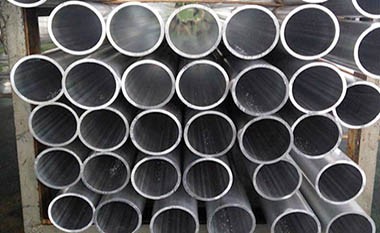6101 Conductive Aluminum Tubular Buspipe
6101 aluminum tubular busbar is a conductive material commonly used in power transmission and distribution systems, primarily made from aluminum alloy 6101. The 6101 aluminum alloy has excellent electrical conductivity, corrosion resistance, and mechanical properties, making it widely utilized in the power industry.
Specification of HC 6101 EC aluminum tubular busbar
| Parameter | Specification |
| Temper | T6, T61, T63, T64, T65, T7, H14, H18, O |
| Outer Diameter | Φ60mm - Φ450mm |
| Wall Thickness | 3mm - 15mm |
| Length | Single length can reach up to 15 meters, deviation: +15~+25mm |
| Diameter Range | Several millimeters to several tens of millimeters |
| Surface Treatment | Anodizing, spraying |
The HC Aluminum conductive aluminum tubular busbars comply with standards such as ASTM B241, ASTM B 317M-07, GB/27676-2011, GB/T 33228-2016, IS:5082, IS:2673, etc. Popular alloy products include 1350, 1060, 1070, 3003, 3A21, 6061, 6063, 6101, etc.
Characteristics of 6101 aluminum tubular busbar
| Characteristics | Description |
| Excellent Conductivity | 6101 aluminum alloy has high electrical conductivity, making it suitable for efficient power transmission. |
| Corrosion Resistance | The surface of 6101 aluminum alloy can form a natural oxide film, effectively resisting moisture and other corrosive environments, suitable for use in various conditions. |
| Lightweight | Compared to copper busbars, 6101 aluminum tubular busbars are lighter, reducing structural load, facilitating installation and transportation, and lowering overall costs. |
| Mechanical Properties | 6101 aluminum alloy has good strength and toughness, able to withstand certain mechanical stresses, suitable for various installation conditions and environments. |
| Formability | 6101 aluminum tubular busbars can be processed into different shapes through extrusion, bending, and other methods, meeting the needs and installation requirements of various power systems. |
Chemical composition of HC Aluminum 6106 conductive aluminum tubular busbar
| Element | Composition (%) |
| Aluminum (Al) | Balance |
| Copper (Cu) | 1.0 - 1.5 |
| Iron (Fe) | 0.5 max |
| Silicon (Si) | 0.5 max |
| Manganese (Mn) | 0.1 - 0.5 |
| Magnesium (Mg) | 0.15 max |
| Zinc (Zn) | 0.1 max |
| Titanium (Ti) | 0.1 max |
| Other Elements | 0.05 each, 0.15 total max |
Properties of HC Aluminum 6101 electrical aluminum tubular busbar
| emper | Yield Strength Rp0.2(Mpa) | Ultimate tensile strength Rm(Mpa) | Elongation | Conductivity %IACS |
| 6101-T6 | ≥172 | ≥200 | 15 | - |
| 6101-T61 | ≥55 | ≥103 | - | ≥59% |
| 6101-T63 | ≥150 | ≥185 | - | ≥56 |
| 6101-T64 | ≥55 | ≥105 | - | ≥59.5 |
| 6101-T65 | - | - | - | ≥58% |
Applications of 6101 Aluminum Tubular Busbar
| Application Area | Description |
| Power Distribution | 6101 aluminum tubular busbars are commonly used in substations, distribution rooms, and industrial power systems as the main lines for power distribution, ensuring efficient power transmission and distribution. |
| Transportation | In electric trains and rail transit systems, 6101 aluminum tubular busbars are part of the contact network and conductive tracks, providing stable power supply. |
| Industrial Equipment | Used in large electrical equipment, variable frequency drives, and motors, 6101 aluminum tubular busbars can provide efficient power transmission to meet the energy demands of industrial equipment. |
| Distribution Systems | Used for connections and power distribution in power distribution cabinets, substations, and other equipment, ensuring safe and efficient operation of power systems. |
| Industrial Power | In large factories and mines, 6101 aluminum tubular busbars serve as the main power line, providing stable power supply to support various industrial applications. |
Production Process of 6101 Aluminum Tubular Busbar
6101 conductive aluminum tubular busbars are typically manufactured using extrusion and annealing processes to ensure excellent electrical conductivity and mechanical properties. By precisely controlling the production process, product consistency and reliability are guaranteed.

